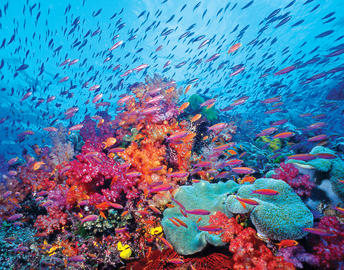Fish Survey Dive, Saturday, July 26th, 8am with Ocean Divers, Key Largo, FL. Please RSVP reefhq@reef.org.
Fish ID Class to prepare REEF volunteers to complete fish surveys for the Great Annual Fish Count. Wednesday, July 23rd, 7pm - 9pm, at REEF Headquarters, 98300 Overseas Highway, Key Largo, FL 33037. Please RSVP reefhq@reef.org.
FUN FISH Survey Dives
Fish Identification Class to be held Wednesday evening July 9th from 6 pm to 9pm at Hydrosports Dive and Travel ; located at 3846 River Road North Keizer, Oregon. The Fish Id class is free of charge and will introduce the basics of fish identification and the 40 most common fish encountered in the Pacific North West. ID Class will be taught by Carol and Gregg Cline, Expert Fish Surveyors who are both part of the REEF Advanced Assessment Team for the PNW.
REEF Staff and Board members are proud to announce the release of our 2013 Annual Report. To view a PDF of the report online, click here. In this report, you will find updates on our membership, the Volunteer Fish Survey Project, regional activities, special projects including Invasive Lionfish Research and the Grouper Moon Project, data use and publications, our upcoming plans, and finances. We are truly grateful for all your support that made 2013 such a success!
With Jamie's arrival at REEF Headquarters, we have been busily working on an exciting lineup of Field Survey trip destinations for 2015. REEF Trips offer a great introduction to fish identification for novice fishwatchers, and are a fun way for experienced surveyors to build their life list while interacting with fellow fishwatchers. REEF staff, board members, and other REEF experts lead these trips, and each features daily classroom seminars and a full diving schedule.
Next time you sign up for one of REEF’s Field Survey Trips, you’ll be greeted by a new voice. REEF has added a new member to the team; welcoming Jamie Dietrich as the new Trips Program and Communications Manager! As Jamie’s position title implies, her main responsibilities revolve around managing REEF’s Field Survey Trips Program. Each year, REEF leads 10-15 week long international Field Survey Trips to diving destinations across the world.
|
|



